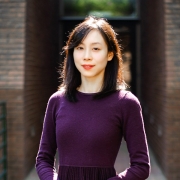Chemists Uncover New Information About a Protein Linked to Alzheimer’s
Although the protein tau, which is associated with Alzheimer’s and other neurodegenerative diseases, has been heavily studied for decades, its role in maintaining cell function is poorly understood.
Normally, tau binds to tube-like structures called microtubules that support cells to help stabilize them. But in diseases like Alzheimer’s, tau dissociates or no longer associates properly with the microtubules, causing them to destabilize and fall apart, losing their ability to maintain cell shape and function. The protein accumulates in the cytoplasm as fibrillar aggregates which are associated with cell death.
Now, a team of researchers is using a single molecule technique to better understand tau and how it interacts with the protein tubulin, which chains together, or polymerizes, to form the microtubules. The technique incorporates fluorophores, or molecules which emit photons when excited by visible light, to figure out properties of tau that would otherwise have gone unseen.
Their paper, published in the Proceedings of the National Academy of Sciences, sheds new light on tau’s interactions with tubulin and how it helps stabilize the microtubules that keep cells in shape.
According to the results, tau binds to multiple tubulin subunits, increasing the local tubulin concentration, which then facilitates polymerization into microtubules. The findings suggest that this interaction may be important to controlling microtubule dynamics.
“Tau’s interaction with soluble tubulin has really been overlooked,” says Elizabeth Rhoades, an associate professor of chemistry who contributed to the findings. “Understanding how tau binds to and interacts with tubulin is important not only for understanding its native role and how it actually stabilizes microtubules but may turn out to be really critical for understanding what happens in disease when you start to destabilize this interaction and the microtubules begin to fall apart.”
Click here to read the full article.





